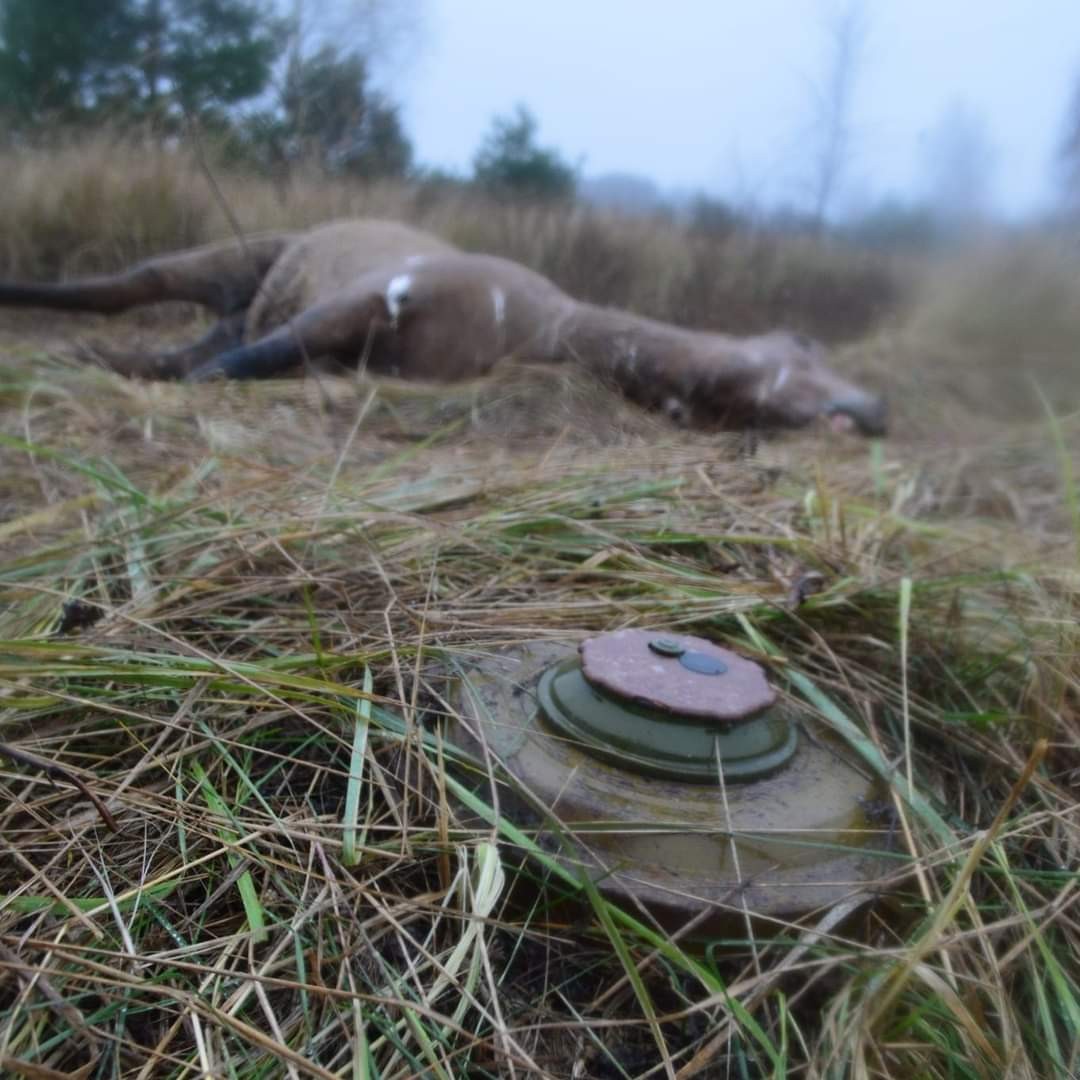Scientists warn that explosive weapons imperil not only people but also wildlife and ecosystems

Przewalski's horse, an endangered species, killed in Chernobyl by a landmine. Photo by Serhii Zhyla
In a letter published in the journal Science, nine scientists from seven countries warn that the deployment of explosive weapons poses a danger not only to people but also to wildlife, in a context in which several countries that border Russia are withdrawing from conventions that restrict them.
Back in March 2025, the Baltic States (Lithuania, Latvia and Estonia), and Finland and Poland declared their plan to withdraw from the Ottawa Treaty or Anti-Personnel Mine Ban Convention and Lithuania withdrew from the Convention on Cluster Munitions. The countries’ departure from these conventions signals that they may produce, stockpile, trade and possibly deploy these weapons. Any benefits, according to the letter’s scientists, are far outweighed by risks.
“Landmines and unexploded ordnance present significant humanitarian and environmental problems around the world,” says Asmeret Asefaw Berhe, one of the authors and professor of soil biogeochemistry at the University of California, Merced, who has published on the impacts of landmines and has been studying how landmines contribute to the global crisis of land degradation for over two decades. “In addition to their use, the clearing of landmines heavily affects surrounding ecosystems.”
Nikica Šprem, another co-author and professor of wildlife science at the University of Zagreb, has experiences with landmines including hearing them explode during wildfires in allegedly demined areas and friends losing their lives while out hunting.
“One of the studies we cite in the letter details injuries and mortality of wild animals from landmines in Croatia, which has been clearing mines for some 30 years,” he says. “Just some days ago, a bomb disposal specialist lost his life while clearing a site.”
“Wild animals are at higher risk than humans because only humans can have awareness of mined areas,” points out Nuria Selva, a researcher working on large carnivore ecology at the Doñana Biological Station - CSIC, who also signed the letter.
Svitlana Kudrenko, a researcher working in the Ukrainian Chornobyl Exclusion Zone (CEZ) and among the letter’s authors, says how endangered Przewalski’s horses have been killed by landmines in CEZ, including recently. Kudrenko is now focused on wildlife amidst warfare or “warfare ecology” and how we might advance monitoring in militarized landscapes.
Deployment of indiscriminate weapons at Europe’s eastern borders would complicate not only ecological monitoring, but exclude people from the landscapes they use and steward. The UN Secretary-General and the UN High Commissioner for Human Rights have both issued statements about how risks linger long after conflicts affecting farmlands, playgrounds, homes.
“We appeal to these countries to take more measured approaches to national defense,” says Katarzyna Nowak, lead author of the letter and adjunct at the Mammal Research Institute Polish Academy of Sciences in Białowieża, near the Poland-Belarus border, where ecological connectivity is already disrupted by state border barriers. “While maintaining global disarmament standards is already being advocated on humanitarian grounds”
Reference
Katarzyna Nowak, Jacopo Cerri, Svitlana Kudrenko, Alexander Kopatz, Izabela Stachowicz, Nuria Selva, Asmeret Asefaw Berhe, Ilpo Kojola, Nikica Šprem. Weaponizing Europe’s borders imperils wildlife. Science, Doi: https://doi.org/10.1126/science.adz1318